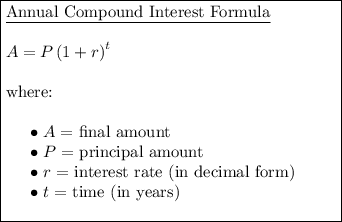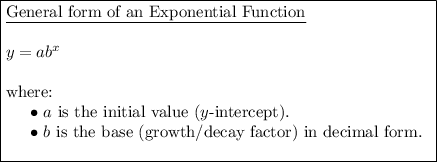Answer:




Explanation:
Question 1
Assuming the account earns annual compound interest.

Given values:
Substitute the given values or P and r into the annual compound interest formula to create an equation for the amount of money in the account after t years:


To find the amount of money in the account after 12 years, substitute t = 12 into the equation:



---------------------------------------------------------------------------------
Question 2

Given values:
- a = 1 (initial number of bacteria)
- b = 2 (as the bacteria doubles)
Substitute the given values or a and b into the exponential function formula to create an equation for the number of bacteria after x days:


To find the number of bacteria after 3 days, substitute x = 3 into the equation:

